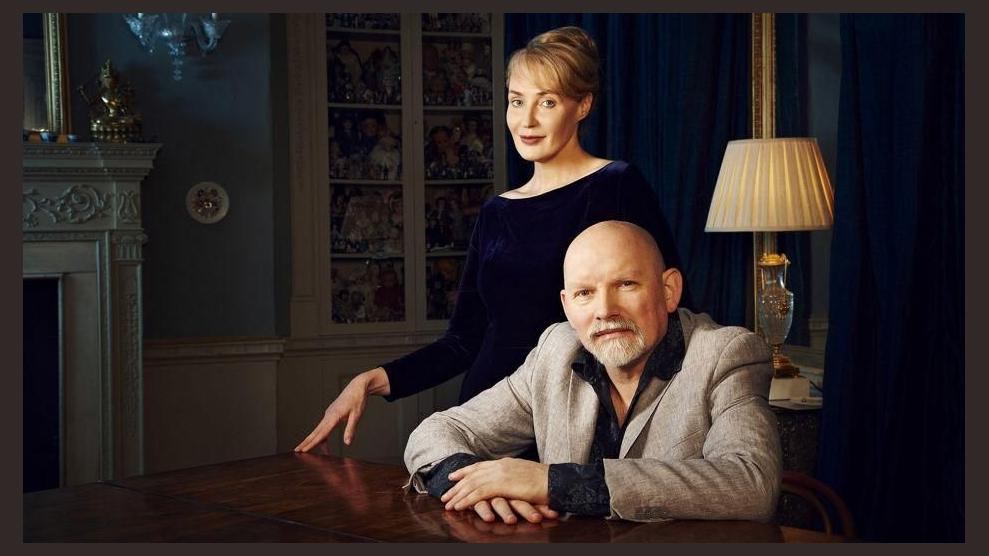 Dead Can Dance
Dead Can Dance
Dead Can Dance: A Journey into the Ethereal
Emerging from the vibrant counterculture of the 1980s, Dead Can Dance captivated audiences with their ethereal and enigmatic sound. Their music, a haunting fusion of Gregorian chant, world music, and electronic experimentation, defied easy categorization.
Formation and Early Years
The band's genesis can be traced to 1981 in Melbourne, Australia. Brendan Perry, a former member of the post-punk band The Birthday Party, joined forces with Lisa Gerrard, a classically trained vocalist and multi-instrumentalist. Their shared love of ancient and esoteric music sparked an instant connection.
Challenges and Controversies
Dead Can Dance's unique approach to music often raised eyebrows. Their use of unconventional instruments, such as the didgeridoo and Tibetan singing bowls, challenged traditional notions of instrumentation. Moreover, their lyrics, often inspired by ancient myths and religious texts, provoked controversy among some listeners.
Discography and Evolution
Despite the challenges, Dead Can Dance's music resonated with a growing audience. Their debut album, "Dead Can Dance" (1984), established their signature sound, while subsequent releases honed their craft. Albums such as "Within the Realm of a Dying Sun" (1987) and "The Serpent's Egg" (1988) showcased their mastery of atmospheric soundscapes and haunting melodies.
Members and Collaborations
As the band evolved, its core members remained constant: Brendan Perry and Lisa Gerrard. However, they often invited guest musicians to contribute to their recordings. These collaborations enriched their sound, incorporating elements of flamenco, Celtic folk, and Middle Eastern music.
Significance and Legacy
Dead Can Dance's influence on contemporary music cannot be overstated. Their groundbreaking fusion of ancient and modern sounds paved the way for new musical genres. Their music continues to inspire and captivate listeners around the world, leaving an enduring legacy in the annals of experimental and atmospheric music.
Emerging from the vibrant counterculture of the 1980s, Dead Can Dance captivated audiences with their ethereal and enigmatic sound. Their music, a haunting fusion of Gregorian chant, world music, and electronic experimentation, defied easy categorization.
Formation and Early Years
The band's genesis can be traced to 1981 in Melbourne, Australia. Brendan Perry, a former member of the post-punk band The Birthday Party, joined forces with Lisa Gerrard, a classically trained vocalist and multi-instrumentalist. Their shared love of ancient and esoteric music sparked an instant connection.
Challenges and Controversies
Dead Can Dance's unique approach to music often raised eyebrows. Their use of unconventional instruments, such as the didgeridoo and Tibetan singing bowls, challenged traditional notions of instrumentation. Moreover, their lyrics, often inspired by ancient myths and religious texts, provoked controversy among some listeners.
Discography and Evolution
Despite the challenges, Dead Can Dance's music resonated with a growing audience. Their debut album, "Dead Can Dance" (1984), established their signature sound, while subsequent releases honed their craft. Albums such as "Within the Realm of a Dying Sun" (1987) and "The Serpent's Egg" (1988) showcased their mastery of atmospheric soundscapes and haunting melodies.
Members and Collaborations
As the band evolved, its core members remained constant: Brendan Perry and Lisa Gerrard. However, they often invited guest musicians to contribute to their recordings. These collaborations enriched their sound, incorporating elements of flamenco, Celtic folk, and Middle Eastern music.
Significance and Legacy
Dead Can Dance's influence on contemporary music cannot be overstated. Their groundbreaking fusion of ancient and modern sounds paved the way for new musical genres. Their music continues to inspire and captivate listeners around the world, leaving an enduring legacy in the annals of experimental and atmospheric music.